Star-shaped Bourtange Fortress in the Netherlands
There are a few off-the-beaten path sights that I like to show visitors from overseas. The top place on my list is the fortress village of Bourtange. The idea of a perfectly star-shaped fortress is just too tempting, so visitors always choose to go see it.
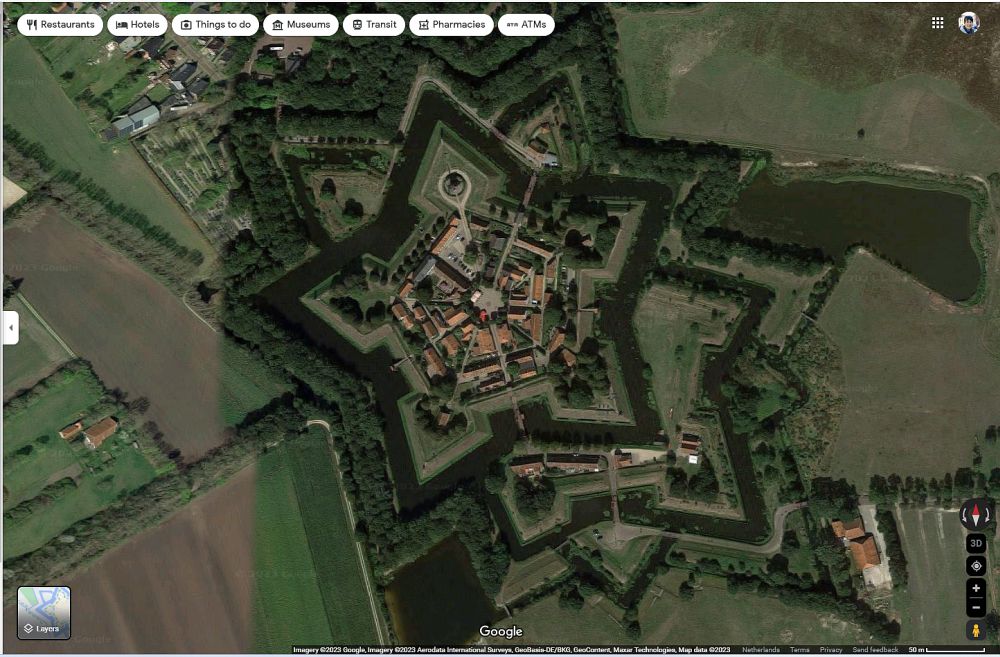
Disclosure: This article contains affiliate links. If you click on one and make a purchase, I will receive a small commission.
History of Bourtange
Did you know that much of what is now the Netherlands was once ruled by Spain?
The Eighty Years’ War (1566-1648) was a revolt against the Spanish, and the northern provinces of Friesland, Groningen and Drenthe were particularly fierce in their resistance to Spanish rule.
The Spanish rulers in Groningen province had supply lines through the marshland to the east, across the modern-day border with Germany.
In 1580, Prince Willem of Orange, who was leading the Dutch revolt against the Spanish forces, decided to try to disrupt those supply lines by building a series of forts along the border, on the few bits of sandy land that were passable among the marshes. This effort did not succeed, and the Spanish did not recognize the Republic of the Seven United Provinces until 1648. Nevertheless, the struggle remains a fascinating piece of Dutch history.
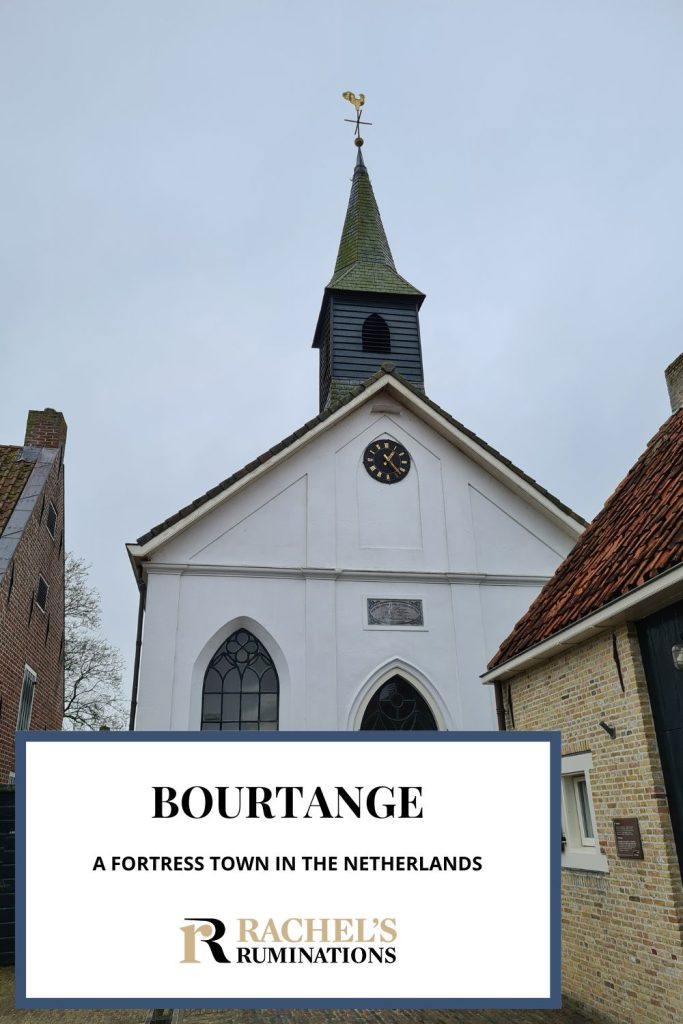
Fort Bourtange
One of those forts was the star-shaped fortress, Bourtange. It blocked the only road in the area through what was once extensive marshland. The fortress was expanded in the following decades, mostly through re-channeling water for moats. Gradually though, since it was not needed once the war was over, it fell into disrepair. By 1681 all of the marshlands around it had dried up because local farmers had changed the water channels to drain land for farming.
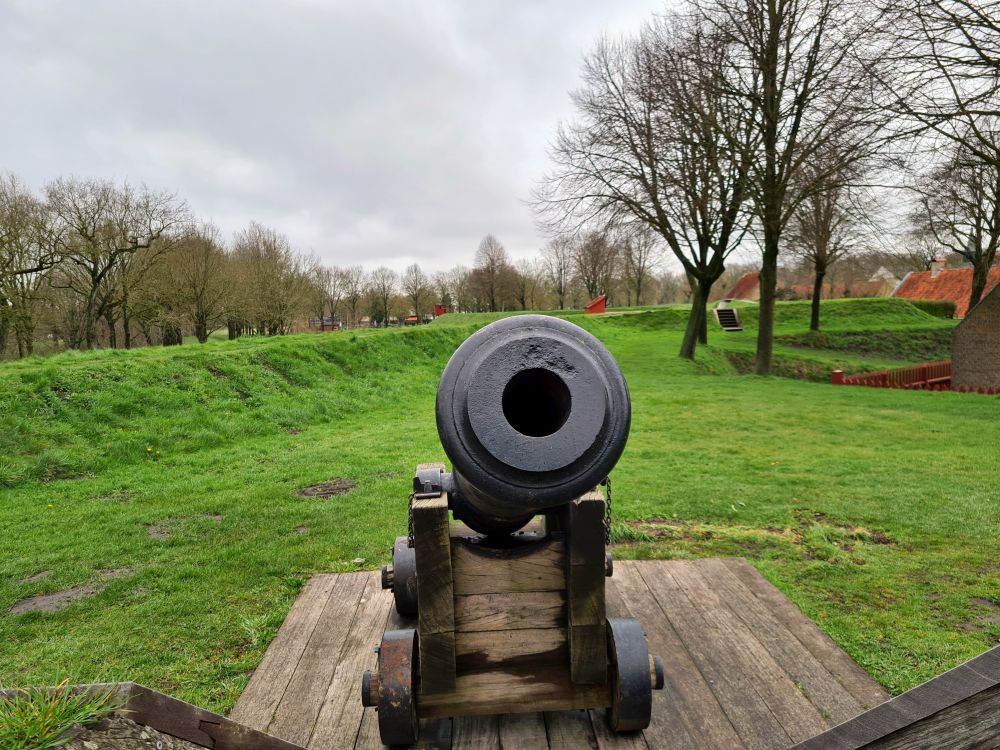
Eventually, from 1739-42, the fortified town of Bourtange was made defensible again through a combination of digging moats and building earthen walls. The buildings inside the fort were also finished.
In the following century, with changes in transportation and weaponry, Bourtange fell into disuse again as a fort. It was dismantled in 1850 and became a local farming village.
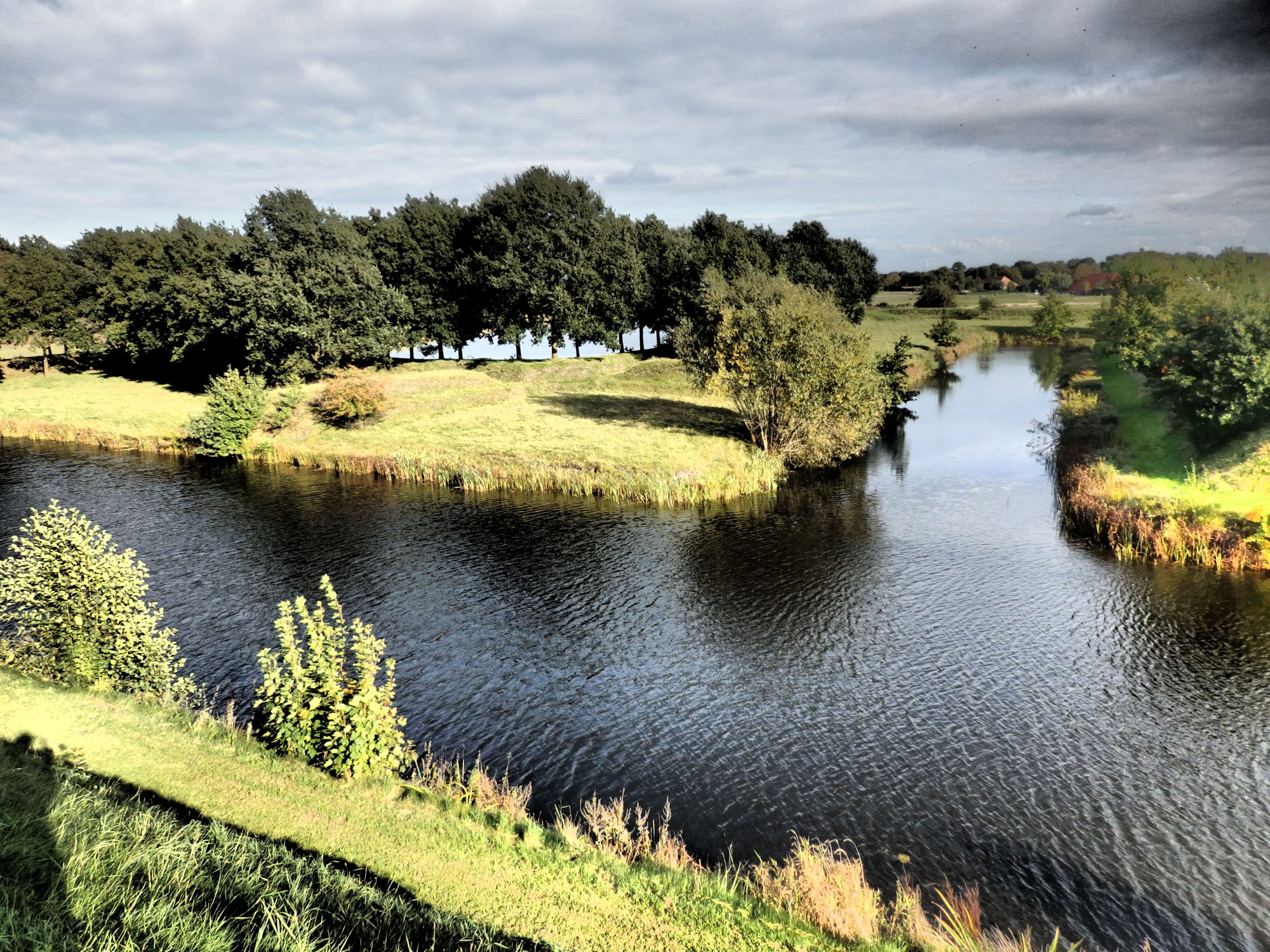
In the latter half of the 20th century, the local municipality decided to rebuild the fort to its 1742 appearance in an effort to revive the local economy. They recognized the value of a charming fortified village to serve as a tourist attraction. Even the “wet horizon,” a marshy area originally intended for the defense of the fort, has been reconstructed for recreational use.
Here are some other off-the-beaten-path sights in the northern Netherlands:
Bourtange today
This is not just an open-air museum, however. Though its income is based on tourism, it is also a living village, with about 50 full-time residents.
That combination—a living village combined with all the charms of an open air museum—makes for a lovely day out.
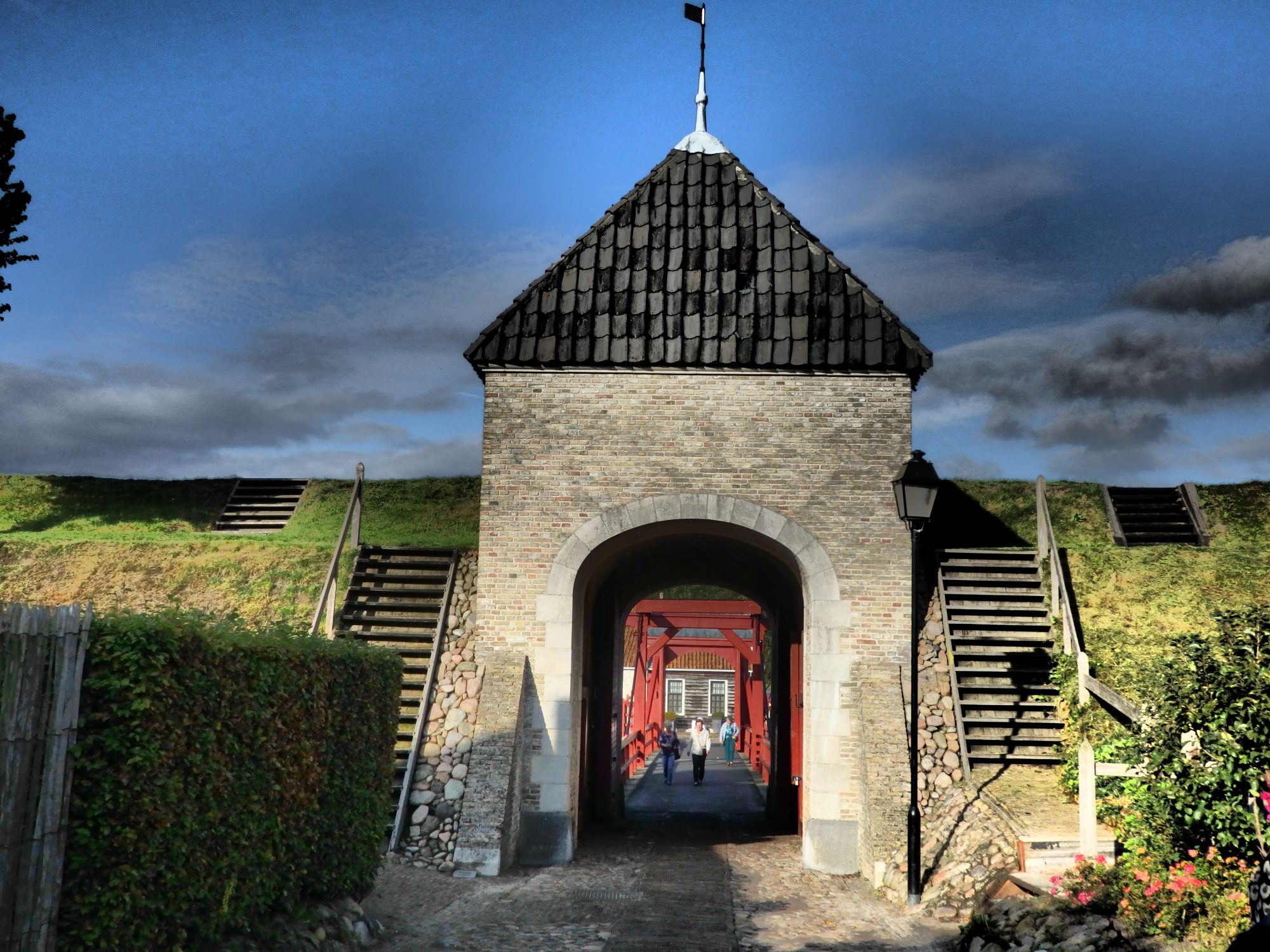
Arriving just outside the fort – about an hour’s drive from the city of Groningen – you can park for free. Then you’ll walk about ten minutes down a cobbled road to the entrance gate to the fortress. Admission to the village is free, but you can buy tickets to the five museums at the visitor’s center next to the parking lot.
Compare rental car prices here.
Make sure to climb up onto the walls and walk around the perimeter of the village. From up there, you can view the buildings inside the walls from above, but you can also see the extent of the fortifications when you look away from the village. It’s not just a star-shaped wall: it’s a series of concentric walls and moats.
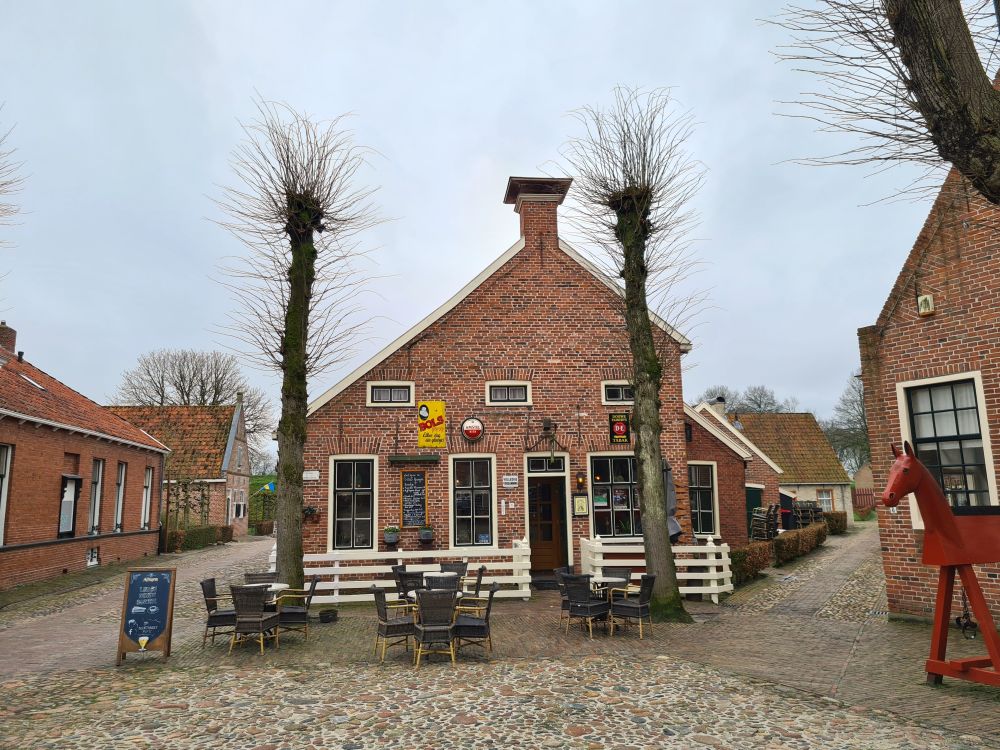
On the walls, you’ll also come upon the traditional windmill and the secreten, small wooden buildings hanging over the moat that the soldiers used as toilets.
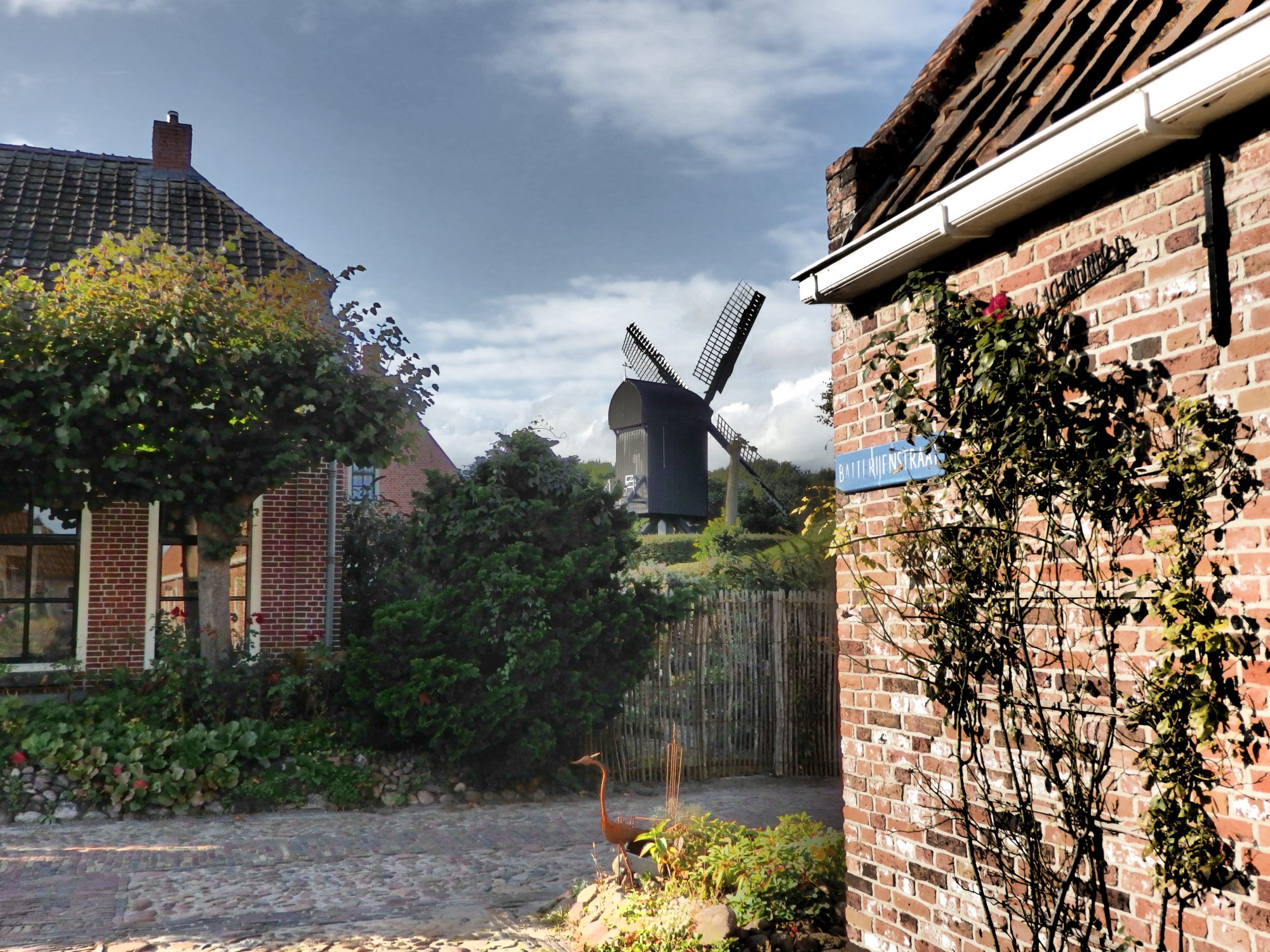
The museums of Bourtange
It’s definitely worth buying the museum ticket (€9.50), since the museums are all worth a visit, depending on your interests. My favorites are the synagogue and the captain’s house.
Also see my article: 38 things to do in Groningen province.
The Synagogue: The synagogue was used until World War II by the tiny Jewish community of Bourtange, at which point they were deported along with most of Holland’s Jews. Only five of the Bourtange Jews survived the war. The synagogue is a well-preserved reminder: the traditional furnishings remain, as well as a small museum in the back room about the Bourtange Jews. It is still used occasionally for services.
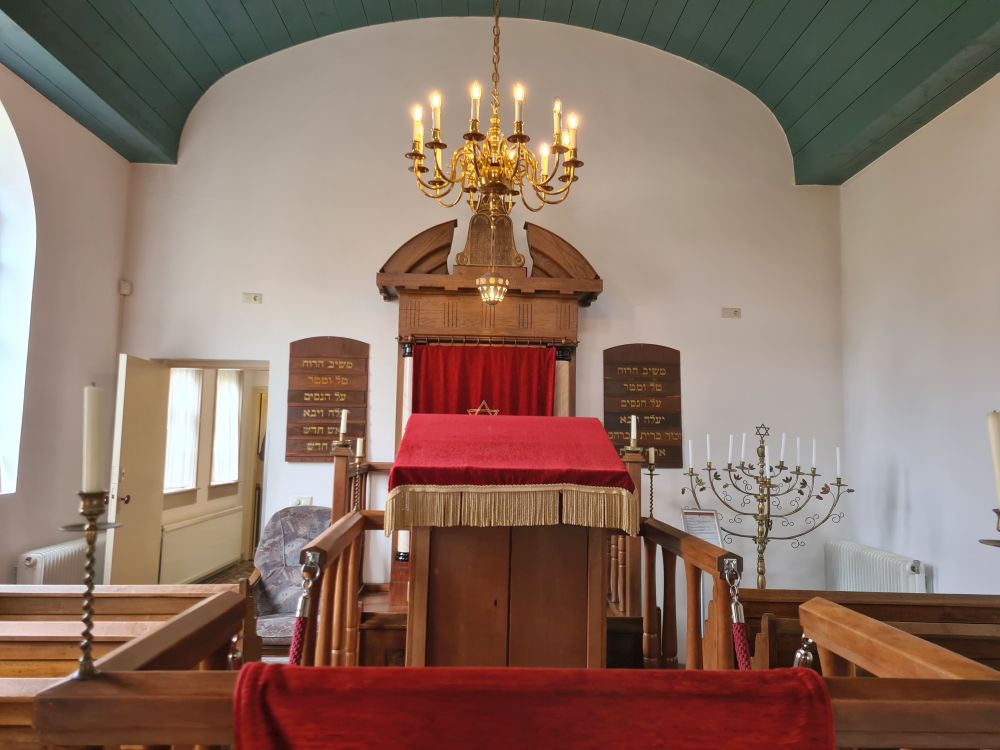
The Barracks Museum: This museum in one of the former soldiers’ baracquen mostly displays archeological finds from the area.
Terra Mora: This modern museum focuses on the surrounding wetlands and is particularly designed to appeal to children.
Het Nieuwe Kruithuis: This former storage building for gunpowder now houses temporary expositions. Inside, you can see a film explaining the fortress’s history up to and including the reconstruction of the fortress.
The Captain’s House (Kapiteinswoning): Built in 1661, this cozy little house has been restored to how it would have looked at the time. It’s a charming glimpse into 17th century Dutch life outside of the glamor of Amsterdam.
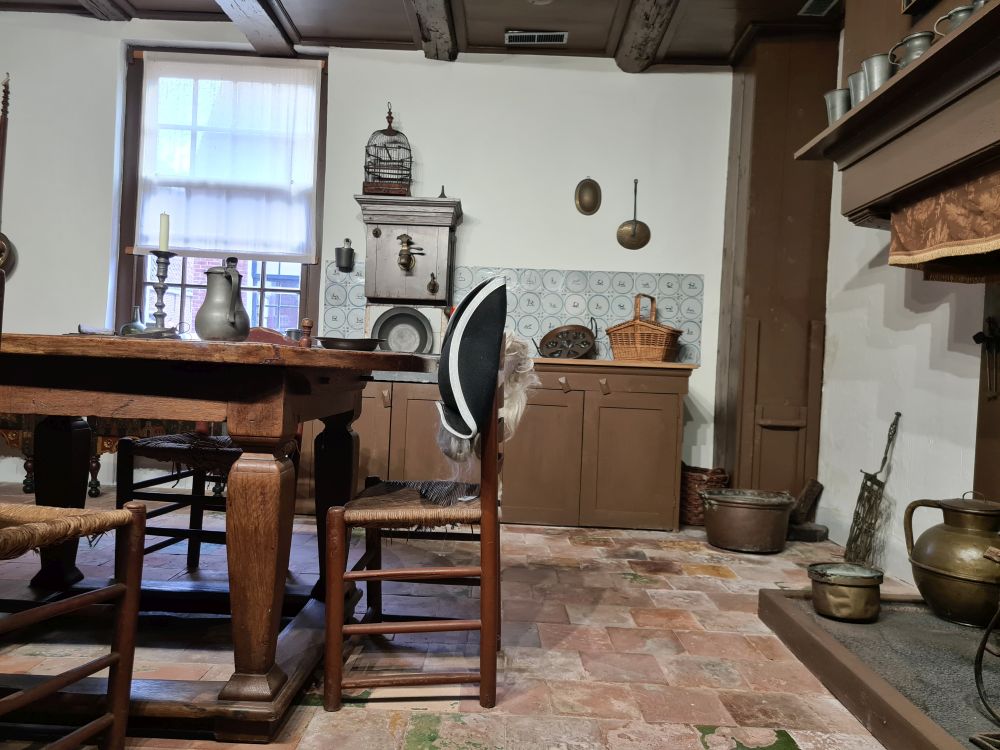
The real enjoyment of Bourtange, though, is just in walking around: on top of the walls, but also through the charming little streets. The central plaza (the Marktplein), cobbled and tree-shaded, is delightful on a sunny day. Sit and have a drink or order a traditional pancake in the outdoor café.
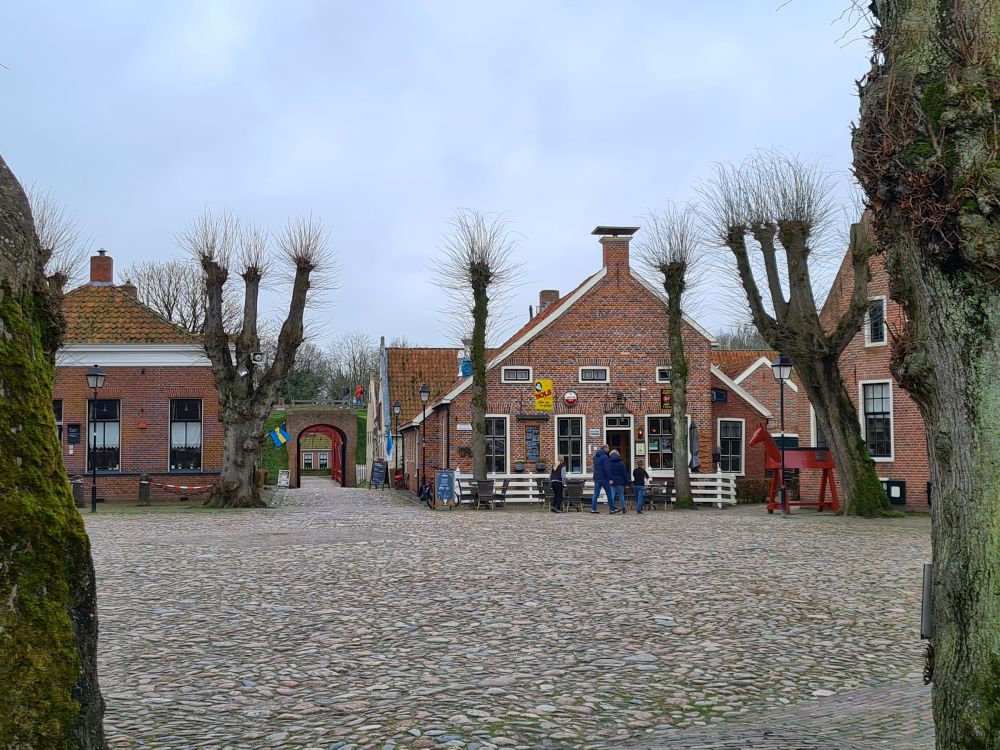
What I haven’t done yet, but would like to do some day, is stay overnight. A number of the houses have been turned into bed and breakfast accommodations. I’m sure a stroll around the walls at sunset and a wander through the village lanes in the early morning hours would make the night’s stay more than worth it.
This hotel is inside the walls in a former barracks.
Bourtange also organizes special events from time to time, from battle reenactments to crafts markets. Check their website for dates, and see if you can time your visit to coincide.
I highly recommend it!
(Last edited June 29, 2023)
My travel recommendations
Planning travel
- Skyscanner is where I always start my flight searches.
- Booking.com is the company I use most for finding accommodations. If you prefer, Expedia offers more or less the same.
- Discover Cars offers an easy way to compare prices from all of the major car-rental companies in one place.
- Use Viator or GetYourGuide to find walking tours, day tours, airport pickups, city cards, tickets and whatever else you need at your destination.
- Bookmundi is great when you’re looking for a longer tour of a few days to a few weeks, private or with a group, pretty much anywhere in the world. Lots of different tour companies list their tours here, so you can comparison shop.
- GetTransfer is the place to book your airport-to-hotel transfers (and vice-versa). It’s so reassuring to have this all set up and paid for ahead of time, rather than having to make decisions after a long, tiring flight!
- Buy a GoCity Pass when you’re planning to do a lot of sightseeing on a city trip. It can save you a lot on admissions to museums and other attractions in big cities like New York and Amsterdam.
Other travel-related items
- It’s really awkward to have to rely on WIFI when you travel overseas. I’ve tried several e-sim cards, and GigSky’s e-sim was the one that was easiest to activate and use. You buy it through their app and activate it when you need it. Use the code RACHEL10 to get a 10% discount!
- Another option I just recently tried for the first time is a portable wifi modem by WifiCandy. It supports up to 8 devices and you just carry it along in your pocket or bag! If you’re traveling with a family or group, it might end up cheaper to use than an e-sim. Use the code RACHELSRUMINATIONS for a 10% discount.
- I’m a fan of SCOTTeVEST’s jackets and vests because when I wear one, I don’t have to carry a handbag. I feel like all my stuff is safer when I travel because it’s in inside pockets close to my body.
- I use ExpressVPN on my phone and laptop when I travel. It keeps me safe from hackers when I use public or hotel wifi.


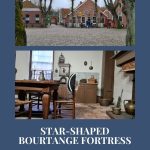
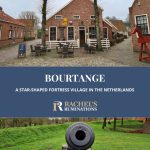

Love the aerial shot. It looks like a fallen star with the extra star sides looking like movement. At 50 residents us it the smallest town in the Netherlands?
No, certainly not the smallest. There are small villages with just a few houses. Doesn’t Bourtange look tidy from above?
This sounds like an amazing experience–you get to see Bourtange evolve from a fortress to farmland and a small town with cobblestone streets. Your photos show how romantic Bourtange is and it takes you back to another time.
Thanks! Definitely worth a visit!
That aerial photo is incredible – it almost looks unreal. What a fascinating place.
I know! So dramatic from that view!
What an unusual story and I can see why you like to take visitors there. There is so much to see and I would love to walk the walls to get it all into perspective.
What a lovely part of the world you call home! Thanks for sharing!
It is, isn’t it? I forget sometimes when the rain gets me down. But that’s what makes it so green!
Bourtange looks like a great place to visit. I love that is also a living village.
Yes, that’s what I love about it. Real people live there.
What a stunning ariel shot! And 50 people – gosh, that sounds claustrophobic, but the streets look adorable. Thanks for introducing me to Bourtange and tempting me to visit.
Yes, it’s particularly striking via Google maps, isn’t it?
Such a fascinating history and I can definitely see why you love to take visitors to Bourtange! I love the fact that it’s a living village as well as the chance to get a glimpse into how life was lived centuries ago. Another place to add to my long list of “Must Sees!”
Let me know when you’re heading this way!
Hi Rachel! What a charming little village! I can understand why you would like to stay the night. Waking up in such a quaint place would be a great start to any day. I find that these little places usually have one or two fab restaurants as well. My home city, Halifax, has a star shaped fort as well. I don’t think it’s as big as this one, but still quite impressive with great views of our harbor. Okay, back to grading hell for me! 🙂
In Dutch they say ‘sterkte,’ which means ‘strength.’ Wishing you strength to get through grading hell.